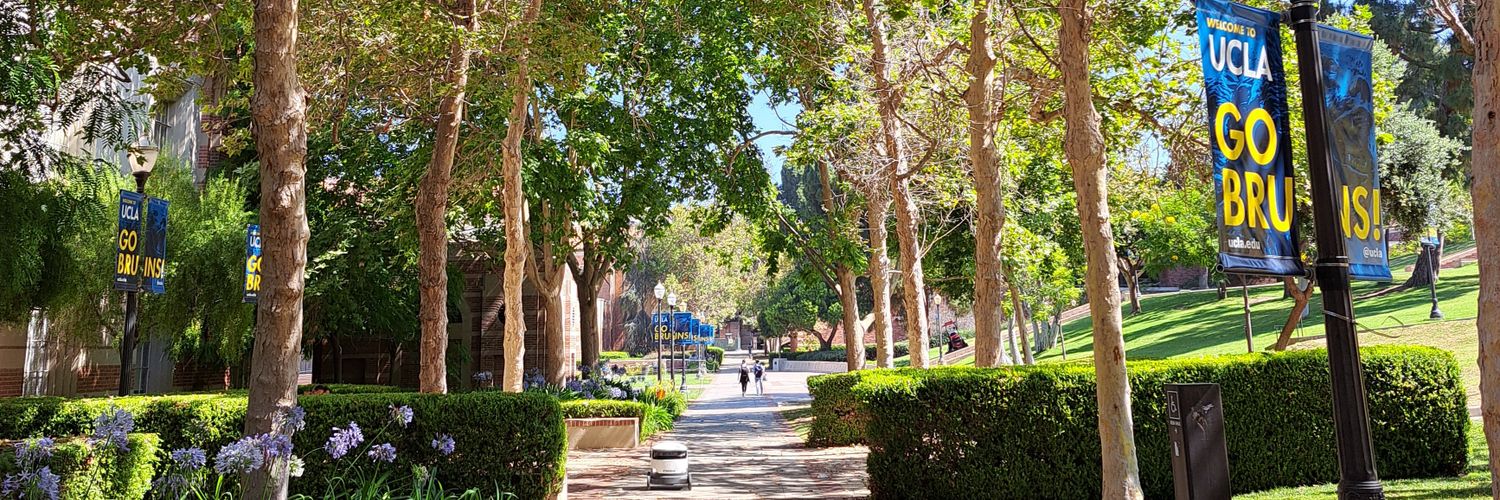
Poorva Garg
@PoorvaGarg11
Computer Science Ph.D. student at UCLA
@sandyskim and I will be at #cshldata24 ! Sandy’s giving a talk tomorrow on hierarchical modeling of CRISPR screens I’ll be presenting a poster on integrating polygenic risk to improve LDL-C measurement Come check us out :) @hjpimentel @cshlmeetings
🚀 I am recruiting PhD students for Fall 2025 at the UCLA Robot Intelligence Lab! 🤖 If you are interested in robot learning and human-robot interaction, mark me as a potential adivisor when you apply to the UCLA CS PhD program! #PhD #Robotics @CS_UCLA
1/n @uclanlp is researching how Black, LGBTQIA+, & women communities perceive and are affected by content moderation, as it relates to English-language social media content using reclaimed language. As part of this, we are recruiting annotators (forms.gle/KP6F9gDCo8Skjs…) …
I am looking for 1-2 PhD students interested broadly in computer systems, compilers, and/or PL! If you would like to do your PhD in a vibrant city with great weather, next to the sea 🌊, and the mountains 🏔️, make sure to apply to UCLA and mark my name as a potential advisor!
[1/n] 🚀Diffusion models for discrete data excel at modeling text, but they need hundreds to thousands of diffusion steps to perform well. We show that this is caused by the fact that discrete diffusion models predict each output token *independently* at each denoising step.
Where is the signal in LLM tokenization space? Does it only come from the canonical (default) tokenization? The answer is no! By looking at other ways to tokenize the same text, we get a consistent boost to LLM performance! arxiv.org/abs/2408.08541 1/5
Proposing Ctrl-G, a neurosymbolic framework that enables arbitrary LLMs to follow logical constraints (length control, infilling …) with 100% guarantees. Ctrl-G beats GPT4 on the task of text editing by >30% higher satisfaction rate in human eval. arxiv.org/abs/2406.13892
🚨LLM RESEARCHERS🚨Want a free boost in speed and memory efficiency for your HuggingFace🤗LLM with ZERO degradation in generation quality? Introducing Prepacking, a simple method to obtain up to 6x speedup and 16x memory efficiency gains in prefilling prompts of varying lengths.…
Very excited for LAFI@POPL coming up this Sunday: popl24.sigplan.org/home/lafi-2024 @Hong_Ge2 will be presenting our keynote! 18 accepted posters spanning many topics within probabilistic and differentiable programming Sponsored by @BasisOrg this year! Hope to see you there!
Neuro-Symbolic (NeSy) methods inject constraints into NNs, but do not support autoregressive models e.g. transformers. We propose Pseudo-Semantic loss a NeSy framework for injecting arbitrary logical constraints into autoregressive models. At #NeurIPS2023! openreview.net/pdf?id=hVAla2O…
Featuring our chapter on semantic loss, neuro-symbolic entropy regularization and constrained adversarial networks! So glad it's out !!
The new edited book Compendium of Neurosymbolic Artificial Intelligence is now available - 30 chapters (700 pages), each conveying integrated content from several published papers of recent years. iospress.com/catalog/books/…
Uncertainty quantification for neural networks via Bayesian model average is compelling, but uses just a few samples in practice😥 We propose 👾CIBER, a collapsed sampler to aggregate infinite NNs via volume computations, w/ better accuracy & calibration! arxiv.org/abs/2306.09686
Shoutout to @kaavya_sahay for her new paper on new year.
The new edited book Compendium of Neurosymbolic Artificial Intelligence is now available - 30 chapters (700 pages), each conveying integrated content from several published papers of recent years. iospress.com/catalog/books/…
Great findings from @uclanlp on bias propagated via vision language models in their new paper, ENTIGEN.
As models like #StableDiffusion perpetuate biases as described in , we find that adding ethical interventions such as ‘irrespective of gender/skin tone’ can cause the model generations to change significantly from our #EMNLP2022 paper ENTIGEN. 1/ Examples: